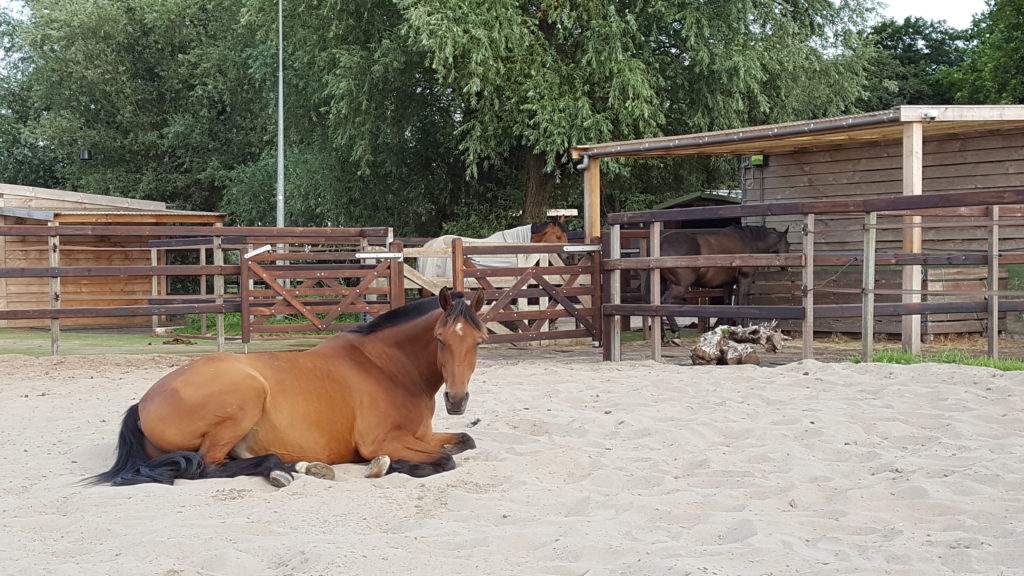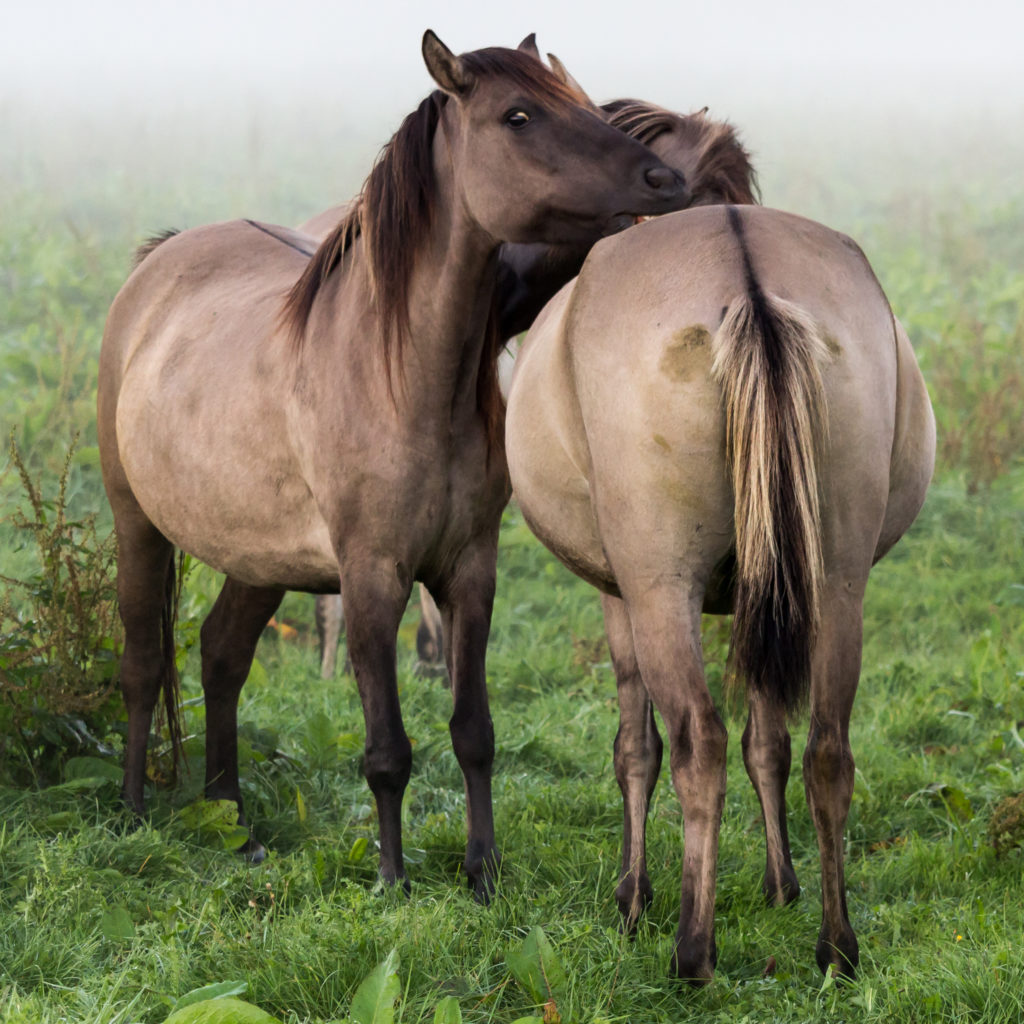THE IMPORTANCE OF CHOICE FOR YOUR HORSE BY JUSTINE HARRISON
THE IMPACT OF CONTROL ON OUR HORSE’S BEHAVIOUR
Horse owners rarely consider how much they control their horse’s life and the impact that could have on their behaviour and temperament. Most aspects of our horses’ lives are controlled. We decide everything for them – where they go, what they eat, who they socialise with, even how they move their bodies and for how long all those things occur.
LEARNING TO LIVE WITH LACK OF CHOICE
Many owners think their horse has plenty of choices and that if they didn’t want to do something, they wouldn’t do it, but actually that may not be the case. Horses often do what is asked as they have learned that when they don’t, the alternative is worse – the kick will get harder, the whip will be used, or you’ll just wait until he gives up and does it. This may not be something they have learned from your relationship with them. A previous handler may have frightened them enough that they learn it’s easier or safer to ‘tow the line’ than to make their own decisions.
This lack of choice can profoundly affect a horse’s overall outlook, their behaviour and ultimately even their health. Horses who are severely restricted or afraid to make decisions can become withdrawn, depressed, or even develop stereotypies in an attempt to adapt to their restrictions. They may become dangerous and difficult to handle when eventually they reach their limit and lash out whatever is nearby.
Horse owners may feel that they are limited in what they can offer their horses, but even on the strictest livery yard we can give our horses choice and the opportunity to make their own decisions every day.
FIND OUT WHAT YOUR HORSE LIKES
Behavioural scientists use ‘preference tests’ as a means of finding out what horses prefer in different situations. For example, to test a horse’s preferred bedding – two identical stables may be set up next to each other with open doors so the horse can go in and out of both at will. Each stable will contain different bedding and the horse’s behaviour is then recorded to see what he prefers.

SOME IDEAS FOR SETTING UP YOUR OWN PREFERENCE TESTS FOR YOUR HORSE!
- DIFFERENT FORAGES: E.g. chopped hay, grasses, alfalfa and herbs can be placed in different buckets so your horse can choose which he prefers.
- FEED: Split his feed up into individual ingredients (eg. chaff in one bucket, balancer in another) so he can select what he wants to eat and when. You may find he really dislikes one ingredient, if so, you can alter his diet to something he prefers. This is especially relevant for supplements, which many horses dislike. You can also present your horse’s feed in different buckets, bowls and nets at different heights around their field and stable, tipping your horse’s feed on top of his hay on the floor will simulate natural grazing and extend his time eating.
- Entertainment: Many horses are confined for long periods of time in their stable or in boring, flat paddocks, so it is vital to give your horse something to do.
- Stable: Fence off an area outside your horse’s stable so he can go in and out at will. Put hay and water in both areas, set up a night vision camera and see where he prefers to spend his time.
- Water: Some horses will guard water as a resource, especially in summer, and this can mean others are reluctant to go and drink. Multiple water sources in a field should always be provided, but consider using different buckets and troughs too, water may taste different depending on how it is presented.
- Turnout: Does your horse have access to shelter in the field? Ensure they have somewhere to get out of the rain, wind or sun – a shelter, trees or bushes. They should have enough space to move away from other horses if they would rather be alone, and to decide if they would like male or female company. If your horse is turned out individually then take him to visit other horses so they can socialise and mutually groom over the stable door or fence.
- Training: Consider the difference between asking your horse if he wants to do something and telling him. Does your horse really have a choice? Reframe how you ask your horse to do something – will he do it for a treat? Remember horses will move towards something they like and away from something they dislike. Use more carrots and less stick!
- Where would he like to go?: Take your horse for a walk to browse the hedgerows on a loose leadrope. Or give him a loose rein and let him decide where he wants to go for a hack, or if he wants to go at all! There may be a reason he doesn’t want to do as you ask, if he doesn’t want to go where you want him to go, this is very useful information.
Giving your horse choice gives him the freedom to be himself. It is a great way to build his confidence, reward him for being bolder and can dramatically improve your relationship as he will start to trust that you are listening to him. But remember to respect his choice, if he says no and you don’t like his decision, then it’s not his choice at all.
For more blog posts, articles, podcasts, webinars and online course discounts – don’t forget to sign up to our membership program.
IF YOU LIKED THIS POST, YOU MIGHT ALSO BE INTERESTED IN THIS OTHER CONTENT PRODUCED BY EQUITOPIA
VIDEO: Solving Horse Behavior Problems; Low-Stress, Effective Solutions
BLOG POST: Sending Your Horse For Professional Training (Part 1)
ONLINE COURSE: Introduction to Behavior for Horse Owners



